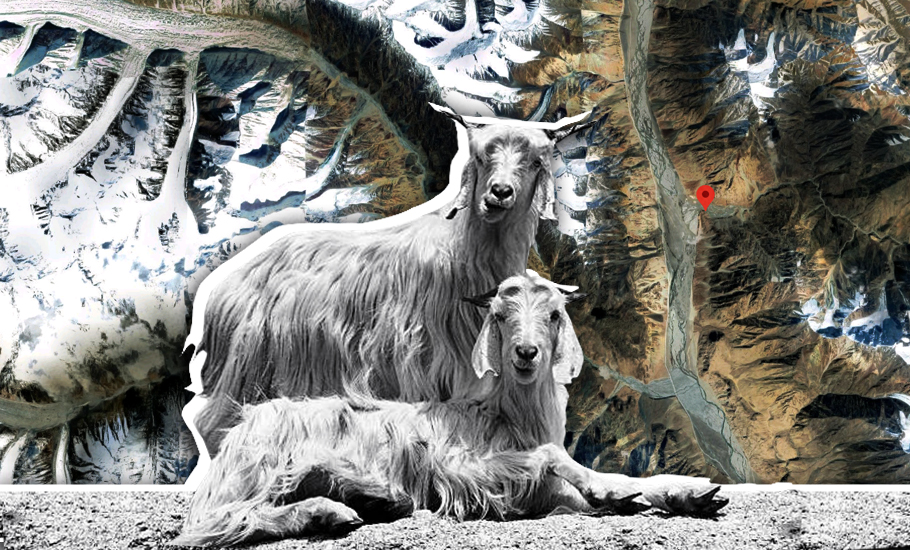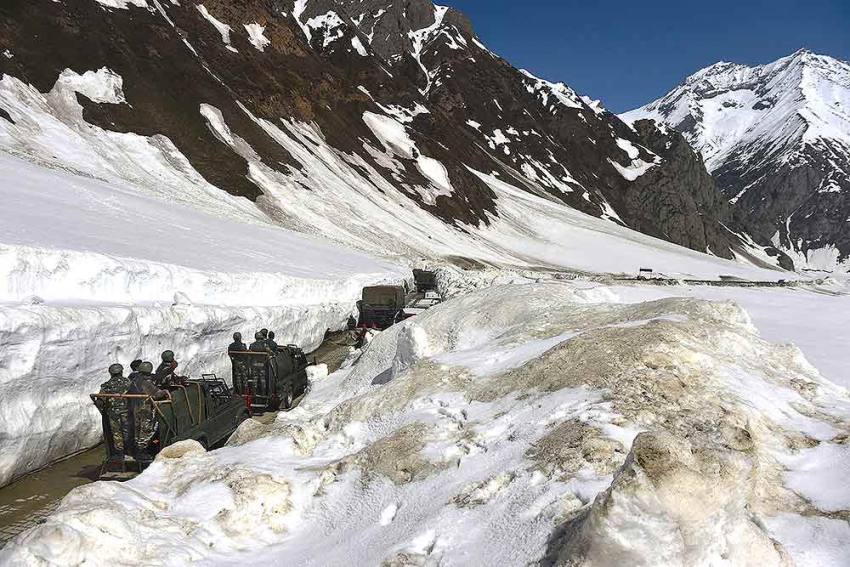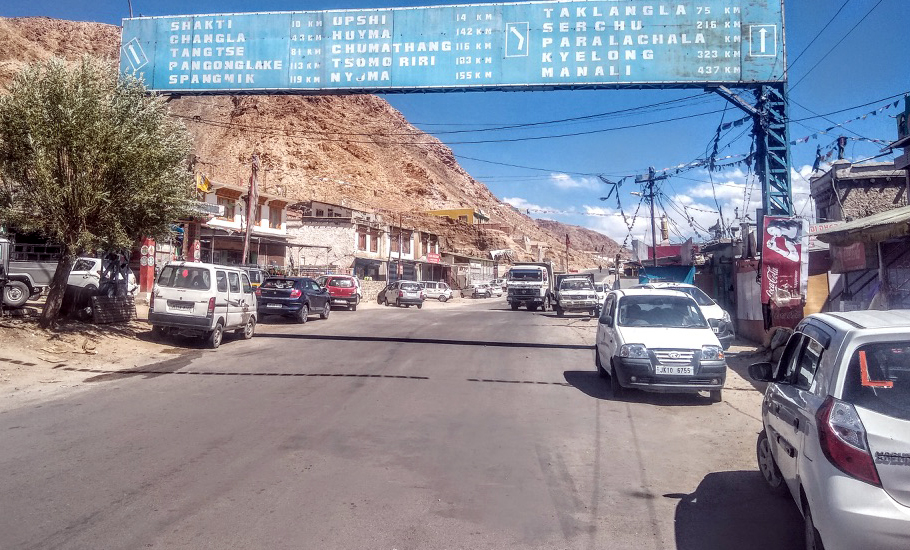
- Home
- India
- World
- Premium
- THE FEDERAL SPECIAL
- Analysis
- States
- Perspective
- Videos
- Sports
- Education
- Entertainment
- Elections
- Features
- Health
- Business
- Series
- In memoriam: Sheikh Mujibur Rahman
- Bishnoi's Men
- NEET TANGLE
- Economy Series
- Earth Day
- Kashmir’s Frozen Turbulence
- India@75
- The legend of Ramjanmabhoomi
- Liberalisation@30
- How to tame a dragon
- Celebrating biodiversity
- Farm Matters
- 50 days of solitude
- Bringing Migrants Home
- Budget 2020
- Jharkhand Votes
- The Federal Investigates
- The Federal Impact
- Vanishing Sand
- Gandhi @ 150
- Andhra Today
- Field report
- Operation Gulmarg
- Pandemic @1 Mn in India
- The Federal Year-End
- The Zero Year
- Science
- Brand studio
- Newsletter
- Elections 2024
- Events
- Home
- IndiaIndia
- World
- Analysis
- StatesStates
- PerspectivePerspective
- VideosVideos
- Sports
- Education
- Entertainment
- ElectionsElections
- Features
- Health
- BusinessBusiness
- Premium
- Loading...
Premium - Events

Amid India-China tensions, Ladakh’s nomads face a frostier winter
The fear of the uncertain environment — the ongoing India-China tensions along the Line of Actual Control (LAC) in eastern Ladakh region — and scarcity of winter pasturelands in border villages amid massive military footfall and infrastructure buildup is adversely affecting the nomadic herdsmen community in Changthang region.

As yet another bone-numbing winter engulfed the cold desert of Ladakh, 30-year-old Tsering Tobgay arrived in Leh town to trade off his most prized possession — 20 Pashmina goats. The nomad from Chushul village of eastern Ladakh got a meagre ₹1 lakh for them. That’s one-fourth of what he used to get in normal times. Yet Tobgay went ahead with the distress sale driven by the fear of...
As yet another bone-numbing winter engulfed the cold desert of Ladakh, 30-year-old Tsering Tobgay arrived in Leh town to trade off his most prized possession — 20 Pashmina goats.
The nomad from Chushul village of eastern Ladakh got a meagre ₹1 lakh for them. That’s one-fourth of what he used to get in normal times. Yet Tobgay went ahead with the distress sale driven by the fear of the uncertain environment — the ongoing India-China tensions along the Line of Actual Control (LAC) in eastern Ladakh region — and scarcity of winter pasturelands in his border village amid massive military footfall and infrastructure buildup.
“This year, the lingering faceoff has left us worried for our lives and livelihood,” says Tobgay. “The young people among us have never seen a situation like this before.”
After a macabre summer during which at least 20 Indian army men were killed in June, eastern Ladakh’s Changthang area stands frozen even as New Delhi rushed additional troops — including the Marine Commandos (MARCOS) of the Indian Navy to patrol the Pangong Tso. With the border standoff now entering its seventh month, efforts have been increased to keep the snowbound Zoji La pass near Sonamarg in Kashmir open for winter traffic to Ladakh.
Down in Srinagar, analysts argue that the highway clearance on a war-footing has to do with Beijing’s belligerence.
The faceoff site stands at the frozen heights of Changthang, the land of Changpas who rear Pashmina goats and sustain the finest cashmere wool brand, at around 14,600 metres above sea level.
Every winter, nomads of Changthang prepare for ‘Losar’ — the onset of New Year celebrations from mid-December. And with that, they start their winter journey to different areas of Changthang in search of winter pasturelands.
But now after the bloody faceoff, nomads fear that the LAC might turn into another LOC (Line of Control) — the explosive border that cuts through divided Kashmir between India and Pakistan and devours the lives of border residents and troopers due to frequent exchange of fire from both sides.
A nomadic life
Till last year, Togbay used to take his livestock, including his 80 Pashmina goats and five Yaks to Phurtsuk Valley, a winter settlement on the Himalayan mountain peak known as Black Top. After some time, they would move to Helmet Top, another peak, for grazing.
“I would leave behind my old parents at home as they cannot move on rough, snowbound high altitude terrains,” the nomad says.

But now, such nomadic movement is not possible. “Because this year, China has grabbed a massive patch of land. We are today living with the same fears which our elders braved during the 1962 India-China War when they had to abandon their hometowns and fled for their safety.”
In Leh town, which betrays the sense of a seething showdown at the frontiers, many fear for Tobgay’s troubled tribe. After 1962, this is the first time that Changthang nomads have seen such a long faceoff, which they believe was never addressed properly or resolved.
Life and livestock at risk
Last year, there was a mortality rate of 85% among Pashmina livestock, says Gyurmeet Dorjee, an ex-councillor of Ladakh.
“This year, people fear for their own lives, but at the same time they are completely dependent on livestock,” Dorjee says.
In 2012, the Ministry of Textiles had introduced a scheme offering free fodder for livestock in order to revive the pashmina industry, “but it was in place for five years only”, he says. “Today these nomads receive fodder on subsidised rates.”
Around 2.5 lakh livestock is reared in Changthang region, an official of the Sheep Husbandry Department tells The Federal. “But due to non-availability of winter pasturelands due to Chinese occupation, the cost of fodder will be more than fifteen times compared to what nomads get from a single pastureland. The procurement and transportation costs are huge.”
In November this year, a memorandum on behalf of the nomads of Phobrang village of Durbuk sub-division of Changthang region was given to Defence Minister Rajnath Singh.
It said that the nomadic population of the Phobrang should not be restricted for grazing and collection of firewood in their traditional grazing areas like Anila, Tharshang-La, Charsey, Lungri, Naklung, Umlung, Tong Kongma, Tong Yokma and Tsog-Tsollu as per their customs and tradition of village.
However, director of the Animal/Sheep Husbandry department of Ladakh, Dr Mohammad Raza, says that 1,500 quintals of fodder and 500 quintals of feed are in place for the winter in most villages of Changthang region.
“Now we have more funds for 6,000 quintal of feed and supply orders have been placed for this 6,000 quintals of feed for livestock in Changthang,” says Dr Raza, adding that 500 quintals of fodder shall be given free of cost during the emergent lean period. The official informed that approximately 5,000 quintals of concentrate feed shall be given free of cost.
“They (locals/nomads in Changthang) have purchased 15,000 quintals of concentrate to feed themselves. The department has arranged for transportation and dumping,” he says.
Housing for nomads in Leh
The nomads live in Rebo, houses made of Yak wool. There is a demand for community bunkers for their security amid strife at the LAC and snowfall.
Stanzin Konchok, a councillor from Chushul — a border area along the LAC with 12 villages — says the major challenge in his constituency is to provide safety measures to tackle any emergency.

“The faceoff is still on and the people in my constituency fear for their safety and their livestock,” Konchok said.
As the fear lingers, some councillors from Ladakh recently met Rajnath Singh and Chief of Defence Staff Bipin Rawat in New Delhi and demanded construction of bunkers for civilians living along the border. They also reiterated the demand for easing of restrictions along the border for native locals to take their livestock for grazing on traditional pasturelands.
“New Delhi has kept an amount of ₹1 crore for community bunkers, but due to weather conditions, they can’t be constructed right now,” says Konchok, who also wants a land allocation for nomads in Leh in case of any emergency migration from the border.
He says that the government should build flats in Leh for border residents so that they can shift there if needed.
In Nyoma constituency, where only state-owned BSNL mobile tower works, Tashi Namgayal, a villager said that the major winter pasturelands in his constituency are under the hold of the Indian Army.
“This year, after the huge deployment of forces in the Nyoma border, the grazing areas won’t be available this winter,” says Tashi. Amid the tensions between the countries, locals in Nyoma have worked as men without uniforms.
“We helped our army in whatever way we can. We took food essentials, water and other items with the help of our yaks to the army tents this summer,” he adds.
“But in return we get nothing. We completely depend on our livestock, but the government has no plans for us. We are in fear of war. We just want our safety and some food arrangement for our livestock because there are no pasturelands available with us this year.”
Divisional Commissioner of Ladakh Saugat Biswas, however, dismisses all fears, saying there is no dearth of winter pastureland and fodder is available for the livestock.
“I cannot comment on demands for community bunkers made by the councillors of the LAHDC. The government is making every effort for their safety and other concerns too. Whenever an emergency will rise, the government has its own mechanism and will take steps accordingly,” he says.
A different LAC
But for Sonam, a government official in Leh, the scenario looks different.
“Sometime in July 2019, on my way to the last village of Demchok to set up a greenhouse for watermelons, I noticed there was no mobile signal,” he says.
But when he reached Demchok, the phone started catching a signal. “It was catching signals from the Chinese side and showing China time. It seems time has already changed along the LAC.”
